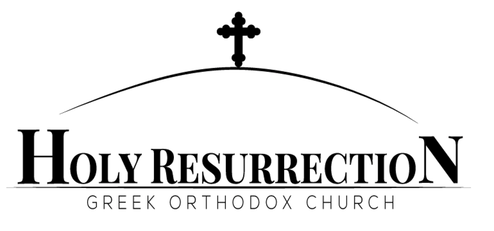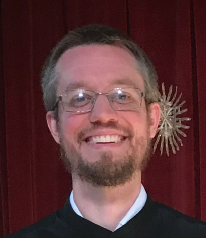Holy Pascha
The Feast of Feasts
It is the day of Resurrection, let us be radiant,
O people! Pascha, the Lord’s Pascha; for Christ God has brought us from death to life, from earth unto Heaven as we sing the triumphal hymn.
Canon of Holy Pascha
To the Most Reverend Hierarchs, the Reverend Priests and Deacons, the Monks and Nuns, the Presidents and Members of the Parish Councils of the Greek Orthodox Communities, the Distinguished Archons of the Ecumenical Patriarchate, the Day, Afternoon, and Church Schools, the Philoptochos Sisterhoods, the Youth, the Hellenic Organizations, and the entire Greek Orthodox Family in America
Beloved Brothers and Sisters in Christ,
Χριστός Ἀνέστη! Christ is Risen!
In the light and joy of this blessed and holy Day of Resurrection, we gather to celebrate our Holy and Sacred Pascha. This Pascha, this Feast of Feasts, is a celebration of life, abundant and eternal. It is a celebration of the power of grace. It is a day above all others when we proclaim throughout the world that the chains of sin and death have been broken, we have victory through Christ, and through the power of the Cross and the Resurrection we are being transformed from death to life.
On this blessed day, Lent ends by being transformed into a feast of joy. The time for contrition of heart and contemplation has past as we engage all our soul, body, and mind with the jubilance before us. Repentance has received forgiveness and grace. We have returned home and are welcomed with the loving embrace of the Father. We have completed the journey of faith, and in the glory of this Holy Pascha we glimpse eternal life and rest. Our hope in the blessed promises of God has been fulfilled in the Holy Resurrection.
This transformation has come to us through our Risen Lord. On this holy day we celebrate because of Him Who said I am the resurrection and the life (John 11:25), and we celebrate with Him. He is in our midst. We have seen His Passion. In the journey through the wilderness we have seen our Lord lifted up on the Cross to bear our shame and sin through His suffering. Today, Jesus Christ is risen in holiness and glory, revealing the power of eternal and abundant life. We greet Him in joy. We receive His body and blood in thanksgiving. We proclaim to the world His Resurrection. We are transformed in the light and life that comes from Him.
Our transformation changes everything! In the radiance and glory of this Holy Pascha we find the meaning of life as it was created to be. We see our goal, our purpose, our completion and our eternity. Our hope for the journey of life is strengthened. Our understanding of life, of others, of the world, and of all creation is changed in the truth and certainty of the Resurrection. Fear is vanquished, the threat of death is annihilated, and the weakness of sin is exposed in the enduring light of our Lord’s holiness and glory. We are now free from the guilt, our communion with God has been restored, and He offers to us an abundant life of peace and joy.
As we gather on this day, let us be completely filled with the joy of Holy Pascha! Let us purify our senses, and we shall see Christ! Let us celebrate the saving Pascha of God! Let us worship our Holy Lord Jesus! Let us forgive everything in the light of the Resurrection and proclaim: Christ is risen from the dead, by death He has trampled down death, and on those in the tombs He has bestowed life!
With paternal love in the Risen Lord,
†DEMETRIOS
Archbishop of America


 RSS Feed
RSS Feed